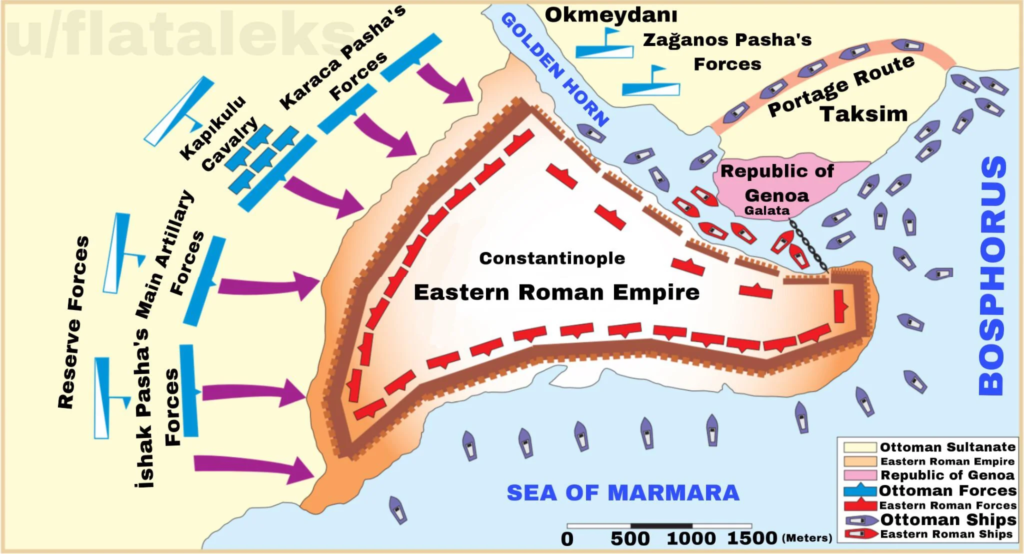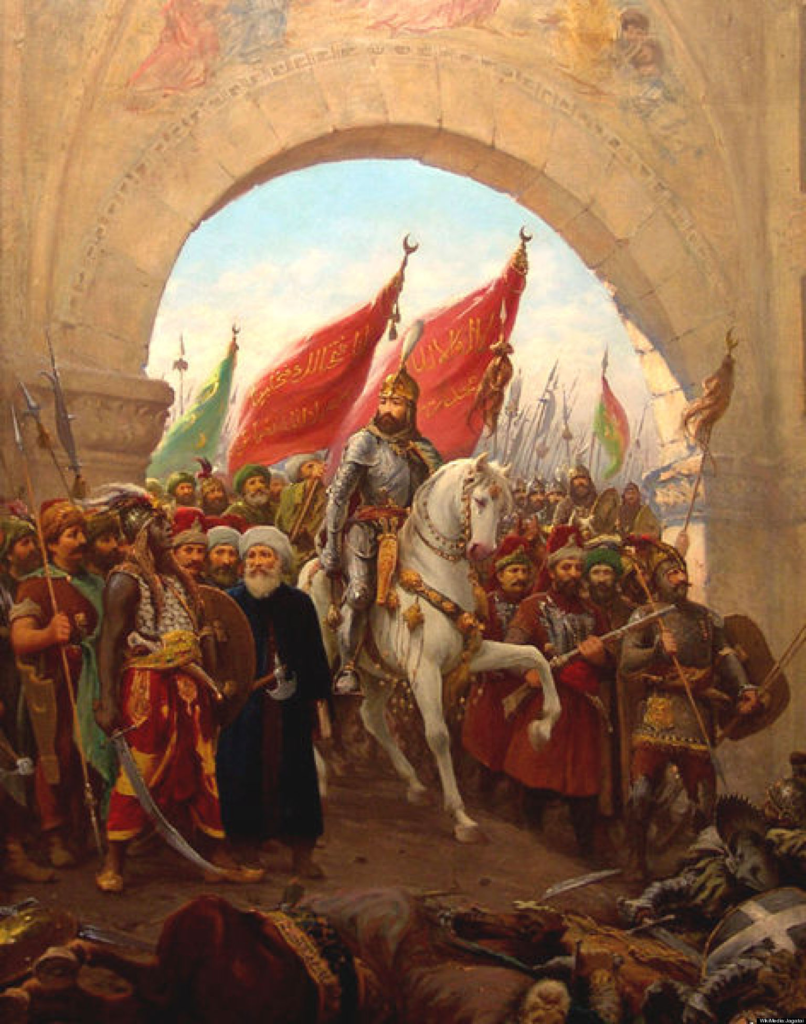Hello and a warm welcome to everyone for another blog. But this is a very special blog as today is the first blog on this website that I will be posting about history and today I will be writing about the famous siege and fall of the Byzantine (also known as the Eastern Roman Empire) capital, Constantinople (present-day Istanbul) to the Ottoman forces under sultan Mehmed the II “The Conquerer”. This is also the first blog under the new series of the “Ottoman Wars”, where I will talk about the most important battles of the Ottoman Empire.

The map of the Siege of Constantinople
Sultan Mehmed II had turned his eyes to the Byzantine capital, Constantinople after his army defeated a major crusader army at Varna in 1444. So the sultan marched from his capital, Edirne with his royal army of about 1 lakh troops, 130 cannons, and a navy of about 100-150 ships. Meanwhile, the Byzantine emperor, Constantine XI who had about 8000 trained and 33000 civilians brought about service for the defence of the city and pleaded support to the rest of his Christian alleys but only the Venetians responded to their cause with Guistiniani leading this small force of the Venetian navy, who played a pivotal role in the battle. The Ottomans arrived at the fortress with their sultan in April 1453. They asked for the unconditional surrender of the city which was refused by the Byzantines because they had defended this city against almost 30 sieges for millennia and also the huge Theodosian Walls could resist any breach. There was also a chain drawn between the city and Galata
THE SIEGE:
The Ottomans began their siege with a massive bombardment of cannon fire on the resilient Theodosian Walls. For the first few weeks, the Ottomans had partly success but the Theodosian Walls of the great city held on. The Byzantines had the upper hand because some of the Ottoman vessels were sunk by Greek fire and the navy failed to get to the Western Frontiers of the city through the chain
But Mehmed famously ordered his ships to go through the land around Galata and the navy finally had reached the Western, weaker frontiers of the city and dispatched some of the troops in them. This was a pivotal move because Constantine now had to place some of his troops on his Western frontiers which weakened the frontal lines. The Ottomans got two minor breaches, one near the gates of St. Romanus where Giustiniani swiftly repelled the enemy and one near the Blackernae Palace which was repelled by the emperor and his royal guard. Since the Ottomans didn’t have major incursions through the city walls, the inner ring of ministers of the sultan urged him to retreat because even supplies were getting over but Mehmed trusted his sword and convinced his commanders for one final massive assault.
The date was the 29th of May when the sultan commanded the massive bombardment of cannon fire and there was another breach created near the gates of St. Romanus. Seeing this opportunity
the sultan, immediately sent his Jannisseries (best troops of the sultan) to the breach which was again defended by Giustiniani. Still, one of the the Janisseires planted the Ottoman flag upon one of the towers near the breach and even Giustiniani, the commander in chief of the Byzantines, was wounded and carried away. After this another 3000-4000 Janissaries entered the city, completely turning the tide of the siege and the Byzantine forces finally fell. Thousands of citizens tried to board the ships. Seeing this from his palace, Constantine XI tried a last stand of resistance with his royal guards but he and his men were killed by the huge Ottoman troops who had entered the city through the gates of St. Romanus.
This was followed by a huge sack of the city and the burning of the once prosperous city to the ground. This battle officially ended the medieval era in Europe and the fall of the Byzantine Empire which lasted for about 1100 years.
The city was renovated and by 1459, it was completed and officially made the capital of the Ottoman Empire until the fall of the Ottomans in 1922…

Sultan Mehmed II victoriously marching into the great city of Constantinople
Hope you all enjoyed the detailed blog of one of the biggest turning points in European history, the Fall of Constantinople. In the coming weeks, I will cover 2 more Ottoman sieges, The sieges of Szigetvar and Eger…